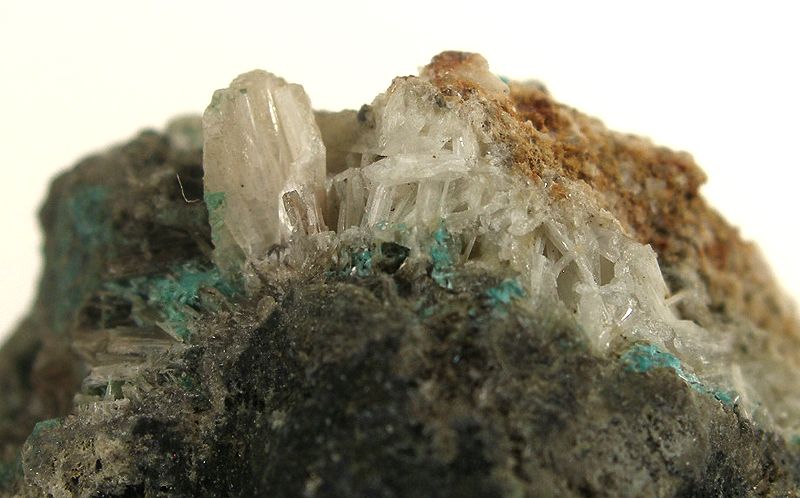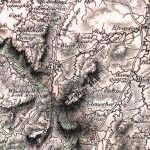The village of Leadhills lies over 1,300 feet up in the Lowther Hills in a desolate, exposed landscape. With a history of mineral exploitation going back to medieval times, it is determined to build a future on its past.

Image courtesy of Rob Lavinsky, iRocks.com – CC-BY-SA-3.0 / CC BY-SA
Lead was mined here more or less continuously from the 13th century until the last shaft closed in 1938. By 1424 however the emphasis had moved to gold which was also found in these hills. The Scottish Crown Jewels, now in Edinburgh Castle, were made of “Leade Hilles” gold between 1538 and 1542 and today gold is still panned in the streams. Even so, from the 17th century the main commercial product was lead from which much silver was extracted.
In 1734 James Stirling was engaged as mine manger by the Scots Mining Company. Stirling, who combined mathematical genius with shrewd business sense, may have felt it prudent to keep a low profile because of his known Jacobite sympathies. Although the Scots Mining Company was then on the verge of bankruptcy, by good management and labour relations, Stirling managed to restore it to prosperity. The miners daily hours underground were reduced to six. At the same time, a health insurance plan was started, a surgeon was engaged, the school was improved, and the men were encouraged to build strong stone cottages and to keep gardens. Finally, so that leisure could be put to good use, the Leadhills Miners’ Reading Society was founded in 1741. It is significant that when David Dale was planning New Lanark, he frequently visited Leadhills to study Stirling’s management techniques.

© Copyright M J Richardson and licensed for reuse under this Creative Commons Licence
The subscription library at Leadhills is the oldest in Britain. Of the 23 founder members at Leadhills, all, except the minister and schoolmaster, were miners. As well as printed books, the library now contains old maps of the mining grounds and of the famous Susanna Vein. There are bound volumes of journals and bargain books, covering a period from 1739-1854. this is one of the few collections not in private hands or institutional libraries and is a particularly valuable collection of day-to-day records of a mining company. Plans are ongoing to extend the library to provide a studies centre and display area to further interpret the way in which the mines were managed through their long history. In addition to being open to the public, the library runs programmes of monthly lectures on a wide range of subjects.
Besides the library, the visitor can see on a four-acre site on a high part of the village the Scots Mining Company House, which was built in 1735. It is believed to be the only surviving example of a small manor house designed by the architect, William Adam. Nearly all the original features are still visible and it is the ambition of the present owners to restore fully the gardens to their 18th century state.

Across the valley and adjacent to the cemetery in which lie the remains of John Taylor, who died in 1770 aged 137, stands the Symington monument. William Symington, who was born in Leadhills in October 1763, became one of the great engineers of the golden age of steam. Whilst he is famous for building the first practical steamboat, the stern-wheel paddle steamer ‘Charlotte Dundas’ in 1803, his local contribution in bringing steam power to drive drainage pumps and winches in the mines was to revolutionise the lead mining industry.
From Symington’s monument a short walk along Ramsay Road brings the visitor to Village Square and the Curlew Bell, which dates from 1770. It was originally rung to mark shift changes in the mines, a forerunner of the factory hooter. Later it was used to mark funerals and to summon search parties to find walkers who had got lost in the mists on the hills. Today it is rung only to welcome in the New Year.
Featured image “Lowther Hills” by TrotterFechan is licensed under CC BY 2.0
Unless otherwise stated, all text, images, and other media content are protected under copyright. If you wish to share any content featured on Clydesdale's Heritage, please get in touch to request permission.




